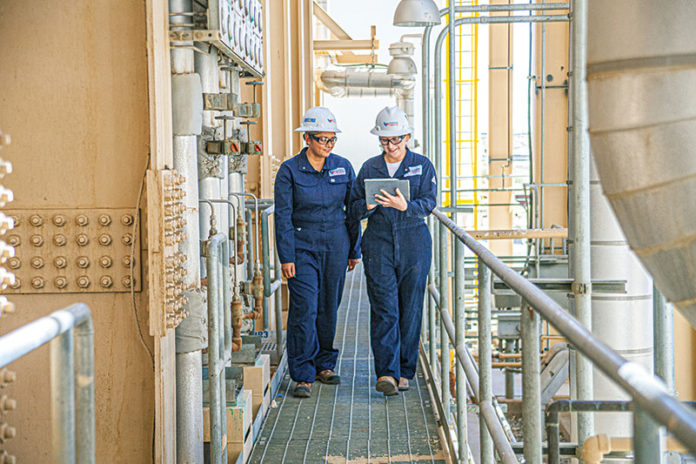California Resources Corp., the second-largest oil producer in the state, quietly moved its headquarters in May to Long Beach, the company confirmed earlier this month. It had been based in Santa Clarita.
Also this month, the company announced a financial partner for its ambitious plan to inject 200 million tons of carbon dioxide into the ground, a project that is estimated to cost $2.5 billion.
On the headquarters news, California Resources spokesman Richard Venn said the move to One World Trade Center in Long Beach took place in late May.
“While the company retains some office space in Santa Clarita, the move helped right-size our building spaces to best accommodate
our workforce and hybrid work model,” Venn said.
While Santa Clarita is much closer to the bulk of California Resources’ operations in Kern County, the company does operate oil platforms off the Long Beach coast and has wells in the Wilmington Oil Field in Long Beach, as well as in Huntington Beach.
Since its spinoff from Occidental Petroleum Corp., in 2014, California Resources has consistently ranked as the No. 2 oil producer in the state — behind San Ramon-based Chevron Corp. — and California’s No. 1 natural gas producer.
The company also on Aug. 3 announced that it has enlisted a financial partner for its Carbon Terra Vault program of injecting carbon dioxide into the ground: Toronto, Canada-based Brookfield Renewable, which has an extensive portfolio of renewable energy-generation projects.
The two companies have formed a joint venture – 51% controlled by California Resources and 49% by Brookfield Renewable – to implement the carbon dioxide injection program. Brookfield, through its global transition fund, is contributing $500 million up front and as much as $1 billion in total to the joint venture, which is being called the California Carbon Management Partnership.
In carbon capture and storage, or what people in the industry often call carbon sequestration, companies take carbon out of the air and inject it in deep underground storage zones, thereby reducing the company’s carbon footprint. In CRC’s case, it can capture carbon emitted from its well sites and inject it back into its wells for storage.
“The strategic partnership with Brookfield advances our carbon management energy transition efforts and provides increased capital flexibility, with which we expect to pursue our overall corporate objectives and deliver on our financial goals and sustainability targets,” California Resources Chief Executive Mark (“Mac”) McFarland said in the Aug. 3 announcement.
